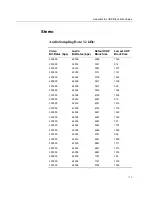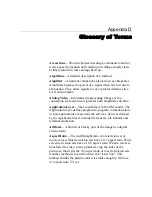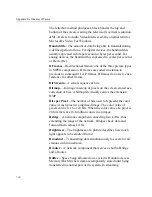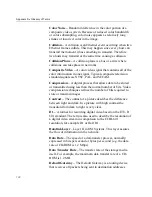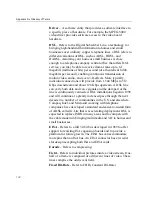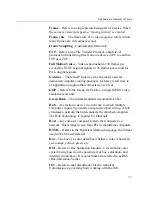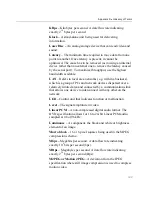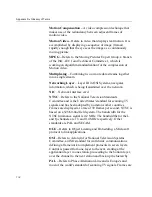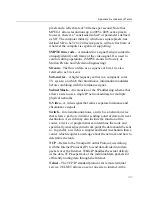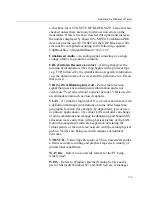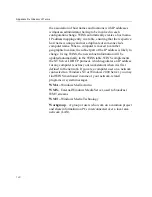
Appendix D
Glossary of Terms
Access time –
The time between issuing a command to read or
write a specific location until reading or writing actually starts
at that location (in mass storage devices).
Algorithm
–
A detailed description of a method.
Amplifier –
A network component, also known as a Repeater.
Amplifiers increase the power of a signal when it is lost due to
attenuation. They allow signals to cover greater distances in a
LAN environment.
Analog Video –
Information representing images is in a
continuous-scale electrical signal for both amplitude and time.
Application Layer –
The seventh layer in the OSI model. The
Application layer defines program-to-program communication,
or how applications access network services. Services defined
by the Application layer include file transfer, job transfer and
terminal emulation.
Artifacts
–
A blurred or blocky part of the image in a digital
video stream.
Aspect Ratio
–
The width/height ratio of a television set or
movie screen. Most television sets have a 4:3 aspect ratio. Wide
screen television sets have a 16:9 aspect ratio. When a movie is
transferred to video, many producers crop the sides of the
picture so that it fits the 4:3 aspect ratio of most television sets.
Another method is to put the video in a "letter box". This
method shrinks the picture until it is small enough to fit into a
4:3 aspect ratio TV set.





